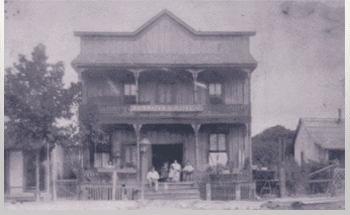Menu
Local Business
We’re proud to feature several local business who help sponsor our efforts.
History of DeQuincy
DeQuincy, Louisiana in the extreme northern part of Calcasieu Parish is a six-mile square block which projects into Beauregard Parish and is surrounded on all sides by pine and hardwood forests. Thomas and Bertrand Beers bought several thousand acres from the U.S. government in May of 1885. The acquisition included the future site of DeQuincy.

A deed dated May 21, 1892, shows that the original purchasers conveyed 9749.28 acres to the Calcasieu, Vernon, and Shreveport Railway. Meanwhile, in Kansas City, Missouri, Arthur E. Stillwell dreamed of building a railway from Kansas City to the Gulf of Mexico. Financed mainly by European investors, the Kansas City, Pittsburgh, and Guld Railway crept southward in the 1890’s laying out towns as it went. The original townsite of DeQuincy was laid out about 1896 or 1897 when the main line of the K.C. P. and G. reached the site. Inconclusive evidence suggests that the site was named to honor a Dutch investor. The first train bound for Lake Charles left Kansas City at 3:00 P.M. on June 20, 1897 and reached Lake Charles via DeQuincy on June 28, 1897.
Meeting the minimum population requirement of 250 people, Governor William Wright Head issued a proclamation recognizing DeQuincy as an incorporated village on May 14, 1903. Ten years later on June 13, 1913, Governor Luther Egbert Hall declared the village to be a town with a population of 1604 inhabitants. Finally, on January 14, 1947, Governor Jimmie Davis declared the town of DeQuincy to be recognized as a city with a population of 5257. In addition to the prominent role of the railroad, the turpentine industry also played a large role in DeQuincy’s early history. Mr. W.B. Logan came to the area about 1921 to explore the possibility of converting thousands of acres of pine stumps remaining from the great logging boom into turpentine, rosin, and pine oil.
The Acme Products Company was formed and the plant remained in operation until 1957 when the supply of stumps was exhausted. About the same time, the Missouri Pacific Railroad also closed its local shops for the maintenance and repair of steam engines. Many felt that the loss of these industries marked DeQuincy’sdemise, but the city still remains a vibrant community blessed with good resources, good people, and good government.
